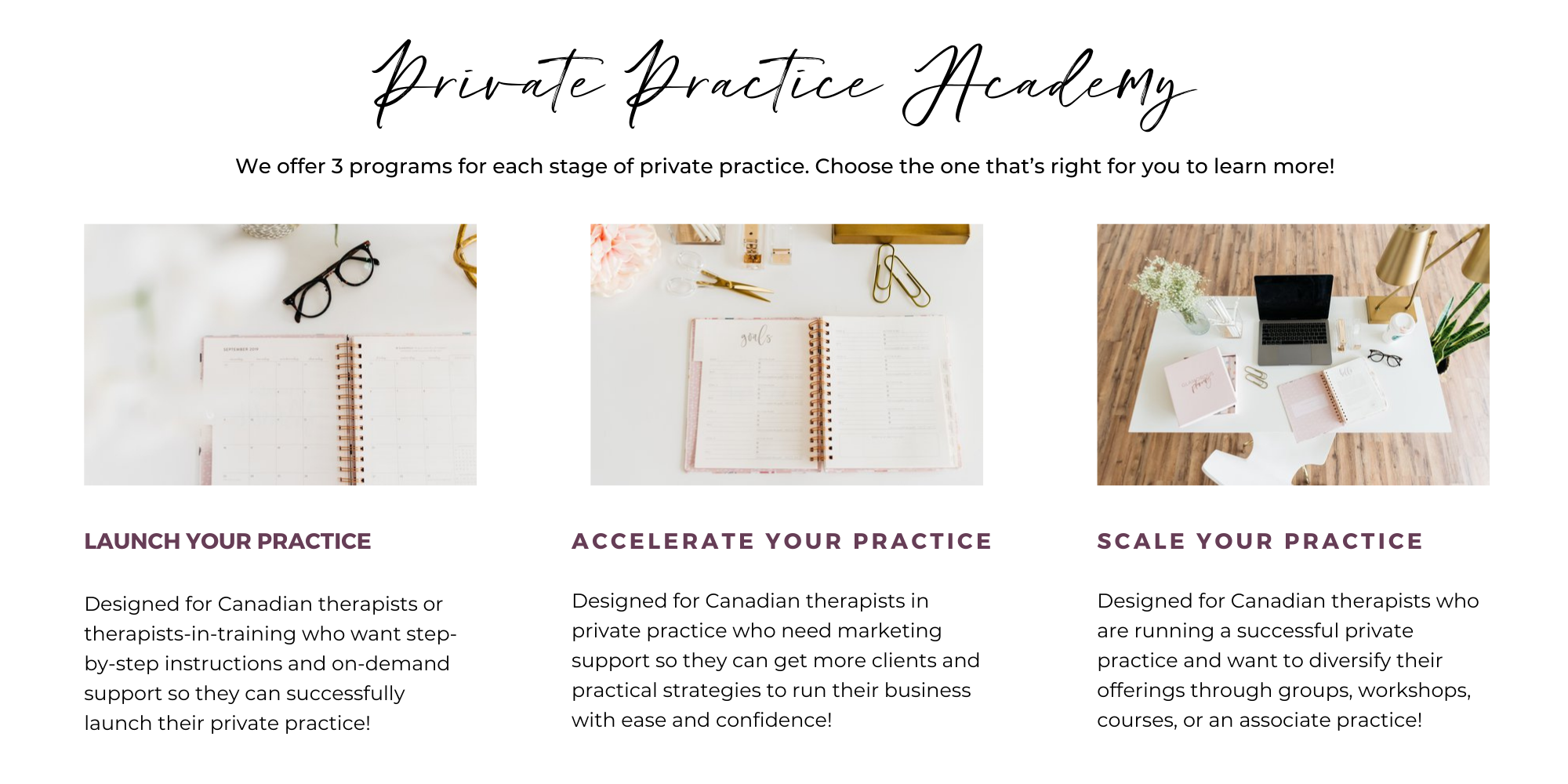How To Define Your Brand Voice
Establishing a consistent brand voice is an important component of building your private practice. Your brand is more than your logo or brand colours and your brand voice helps to establish you as an authority in your field and will make your content easily recognizable by your ideal audience.
For ease of use, consider creating a brand voice chart to reference while you create content, website copy or any other marketing materials such as emails, social media posts or e-books.
Here’s how to define your brand voice:
Collect Samples
Take some time to review all of your content or piece of communication. This can include blog posts, profiles on directories like Psychology Today, emails with clients, or website pages. The goal here is to look at your content critically and determine what pieces are truly representative of your brand voice. This means that any of your samples that could pass as content for another practitioner needs to be set aside and reworked to infuse more of your unique voice.
Define Your Brand Voice In 3 Words
Once you have picked a sample of your content that is representative of your unique voice, take some time to identify trends in the language that you use. Think about how you can group your content into themes.
Consider what type of personality traits you would use to describe your brand voice. It is during this process that you can also identify how your brand voice is different from that of your competitors. For example, you might describe your competitor as aloof while your brand voice is welcoming.
Once you’ve selected 3 key themes or traits, take it one step further and think about how these traits are woven into your content and communication. If you define the brand voice of your private practice as passionate, your audience may consume your content and describe it as compassionate, heartfelt or expressive.
Develop Your Brand Voice Chart
Once you have identified your main themes or traits for your brand voice, you can work to build out your brand voice chart. This handy reference guide will help to ensure that each piece of content or communication in your private practice is authentic to your brand.
Your brand voice chart should include the 3 characteristic traits, the description of them, and some general ‘dos’ and ‘don’ts’.
Using the previous example of ‘passionate’, your brand voice chart would include:
Description: I’m passionate about improving the quality of life for those living with post-partum depression through the use of Cognitive Behavioural Therapy.
Do: use postive encouragement, use stong verbs and adjectives, demonstrate authority and expertise
Don’t: use lukewarm or overused adjectives, use repetitive sentence structure, use dry or boring words
Curate Strong Examples
Once your brand voice chart has been created, work to create or refine content to ensure that it follows your guidelines. Keep strong examples in a quick reference folder so you can use them in the future to help guide your content creation.
Be Comfortable With Change
You may determine that, as your private practice grows, your offerings shift or you refine who your ideal client is, your initial brand voice required tweaking. Go for it! Review your brand voice chart and make adjustments as required to ensure that your content and communications are always reflective of where your private practice is.
Looking for guidance in marketing your private practice? Consider joining our Accelerate Your Practice Programs. I have course material dedicated just to marketing your practice!
If you are dreaming about private practice, or just in the launch stages, download my free e-book and discover the 5 biggest reasons you CAN start your private practice today … without having 10k in the bank or 10 years’ experience!

